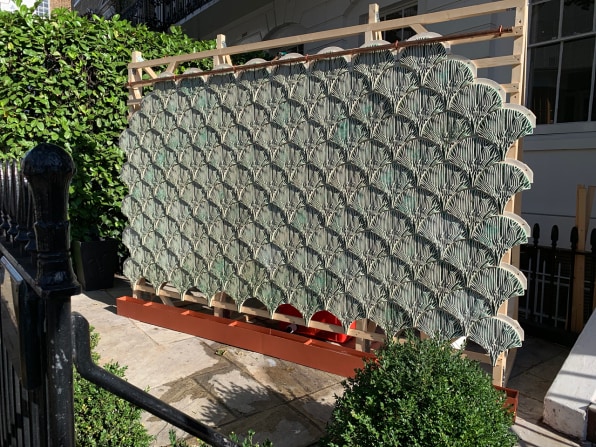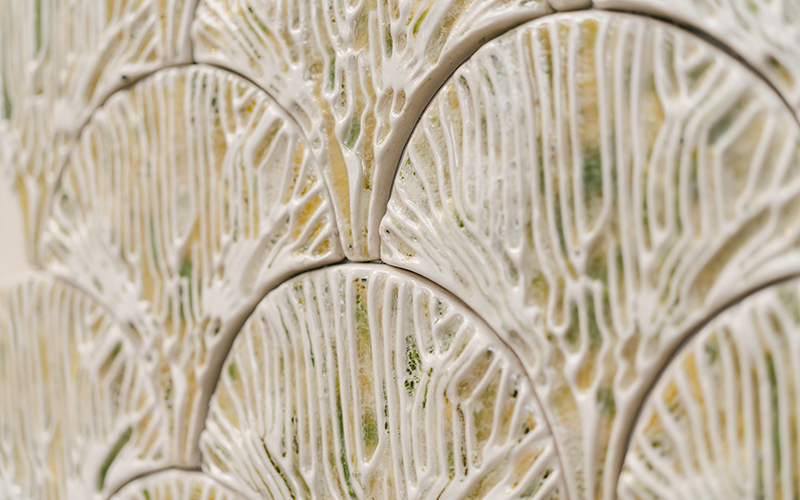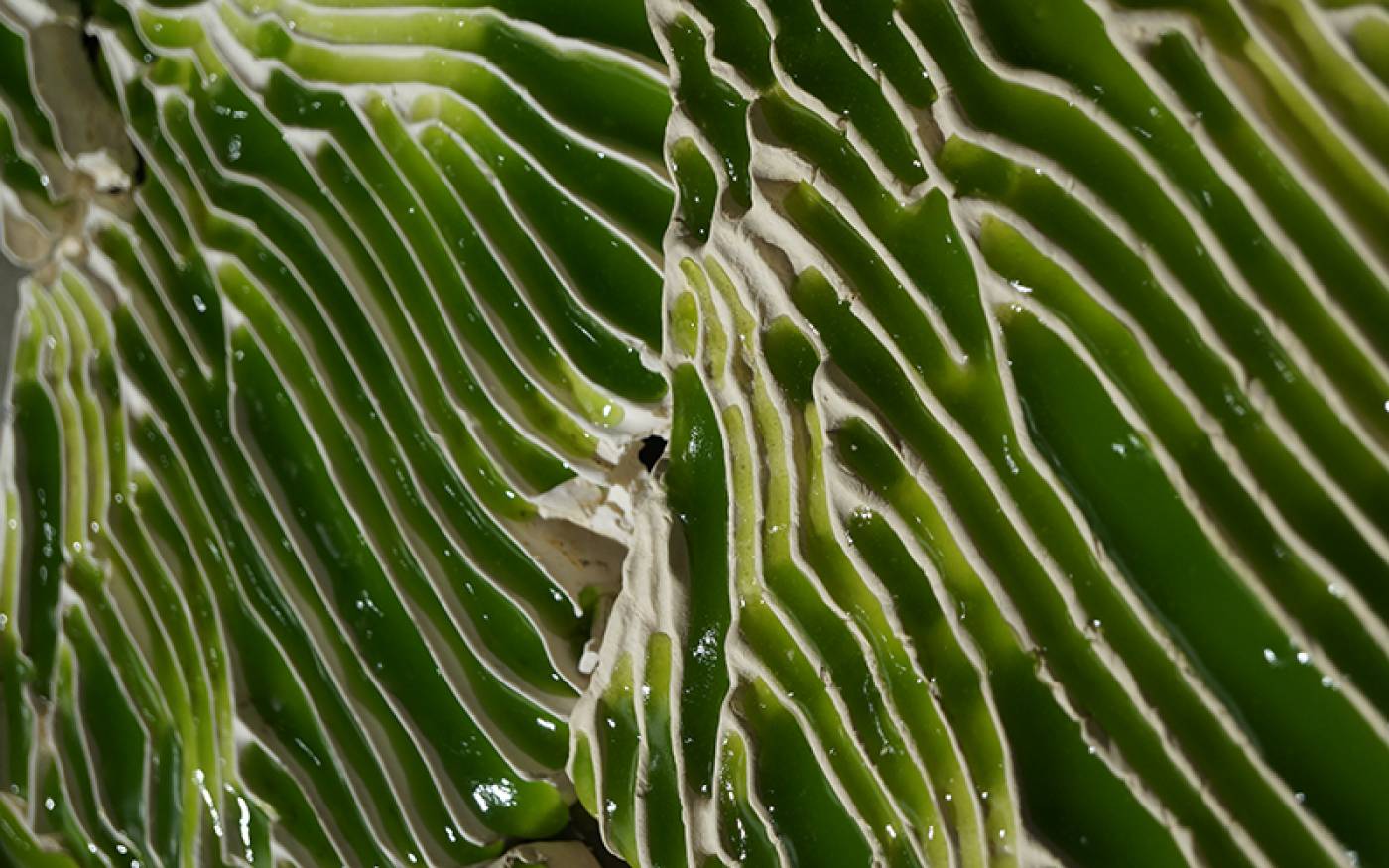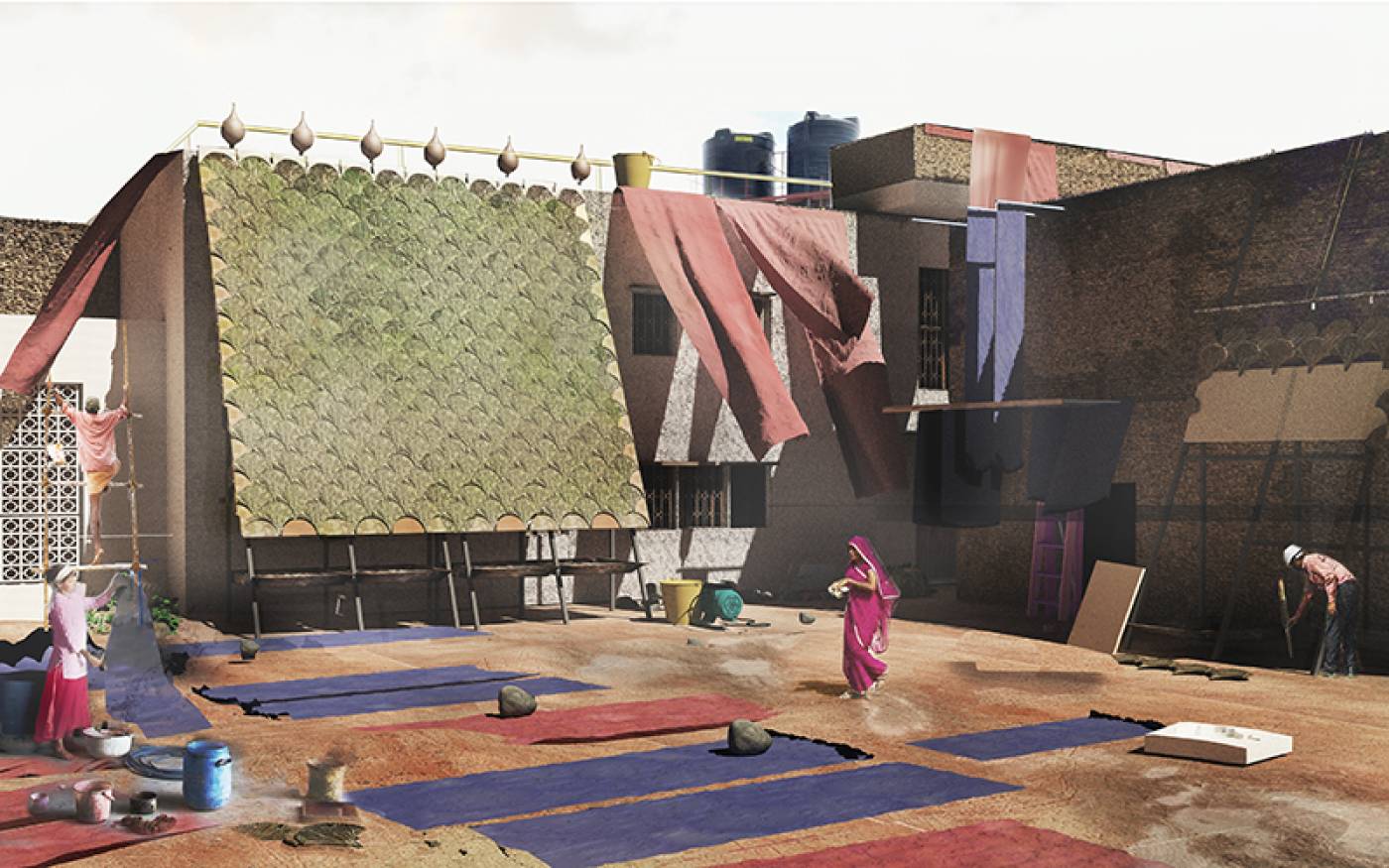
- Sustainable Planet -
- 5mins -
- 934 views
Architect Designs Algae-infused Wall Tiles That Eat Toxins and Purify Polluted Water
British architect Shneel Malik and team of designers and biochemical engineers from University College London created algae-infused walls to treat wastewater naturally and cheaply, removing heavy metals and other pollutants without harsh chemicals.
These DIY algae-infused tiles can extract toxic chemicals from water
Up to 80% of India’s surface water is polluted. While much of this pollution comes from untreated sewage, industrial waste water is also a major contributor, with textile production releasing dyes and unwanted chemicals into rivers. To tackle this problem at a local level, British architect Shneel Malik and the Bio-Integrated Design Lab at the Bartlett School of Architecture created a modular system of tiles inlaid with algae that can filter toxic chemical dyes and heavy metals out of water naturally and cheaply, without the use of harsh chemicals.

The ‘Indus’ system is a low-tech, affordable solution to a massive problem
After a trip to India, British architect Shneel Malik felt she wanted to create an affordable low-tech solution to the extreme water pollution she had witnessed in the country. — reported Return To Now.
The idea she came up with was algae. Just like certain types of bacteria and fungus, algae can remove pollutants from our water and soil by eating them.
It’s a developing science called bioremediation, in which beneficial microorganisms are being used to biodegrade plastic, clean up oil spills and unclog drains.
Small-scale textile dyers and jewelry makers in India rely on water from nearby streams, which are heavily contaminated with cadmium, lead, and arsenic—thanks, in part, to the dyes used to colour our clothes.
These toxic metals pollute the groundwater, soil, and air in many Indian communities, causing multi-generational health problems in the community.
Malik and a team of biochemical engineers at the Bio-Integrated Design Lab at the Bartlett School of Architecture (University College London) found various types of algae capable of removing the toxins.
One particular algae species reduced the concentration of the cadmium 10 times within 45 minutes.
They infused the algae into a seaweed-based hydro-gel and lined specially textured ceramic tiles with it.
The clay tiles were designed by Indian artisans to imitate the veins of a leaf, to evenly distribute water and nutrients over the broadest surface area possible.
The tiles are put together to form modular walls, designed to filter water as it flows down from a wastewater tank on the top of a building.
The passive, gravity-fed filtration system requires no pump or electricity. The water becomes purified and can be recirculated through the wall if it was particularly polluted to start with.
It’s a low-tech, affordable solution for artisans who don’t have the space or money for Western-style wastewater treatment systems.
Malik hopes to conduct a pilot project in a textile courtyard in India and eventually expand it to expand it to artisan communities.
‘Indus’ has won the A/D/O Mini Water Futures Design Challenge, in the Future Systems and Infrastructure category.
Source: ReturnToNow.net


‘Indus’ tiles can be continually reused and re-filled with fresh algae
“The materials required to prepare the hydrogel along with the algae cells can be supplied in powdered form," the project’s lead, Bartlett PhD student Shneel Malik told Dezeen.
"Much like cooking, you can add just the right amount of powder to water in order to prepare the hydrogel for application to the tiles."
Once filled, the tiles are assembled into a wall and water is poured into the system through inlets at the top. It trickles through the tile channels and is collected at the bottom.
This is a symbiotic relationship, explained Malik: "The algae produce a set of compounds called phytochelatins, which enable them to capture these metals, without which they would be unable to grow."
The compounds remove the pollutants from the water and deposit them within the cell of the algae, where they are stored.
"At some point, the hydrogel will become saturated and will need to be replaced," she told Dezeen. "The exact timing depends on the amount of pollutants in the water, but we have made several formulations that are stable for months."
Once they are saturated, the algae can be replaced with a fresh batch. The base tiles, however, can be continually reused and re-filled.
Each modular tile unit is attached to the next through half-lap joints, and so can be individually removed without taking apart the entire system. This is crucial, as it allows for easy maintenance and adaptation to the constraints of the local built environment.
The particular size of the tile wall can be customised to suit the available space and the distance the water must travel to be fully purified.
Future milestones for the project include performance tests in the UK and then, Malik hopes, a pilot project on-site in India, where an estimated 80% of surface and ground water is polluted.
While in the current iteration of Indus, pollutants are merely captured, she has ambitions to expand the system to include a second stage, in which the hydrogel is processed to remove the heavy metal nanoparticles from the algae cells.
In an "incentive-based closed loop system", these valuable raw materials could then be sold on to high tech companies, which use them within their own manufacturing processes.
Source: Dezeen


